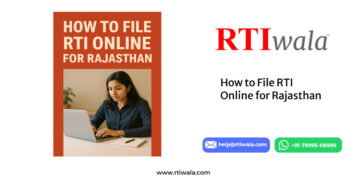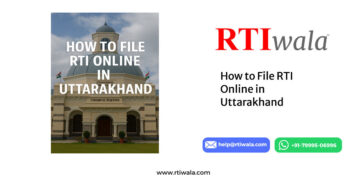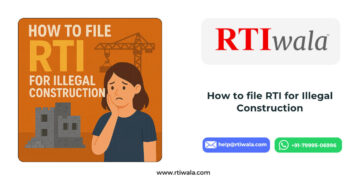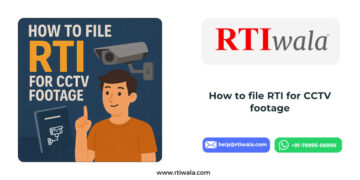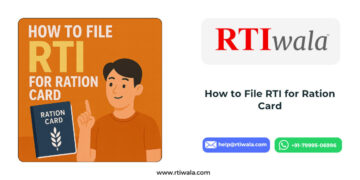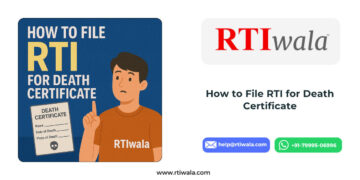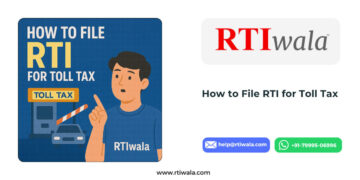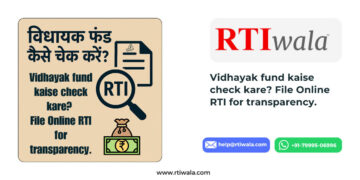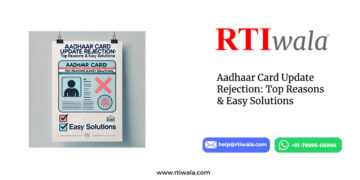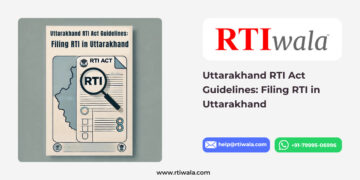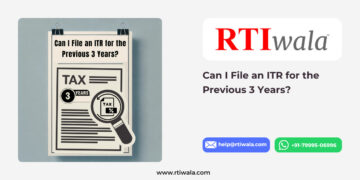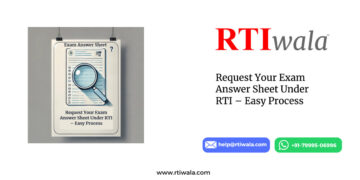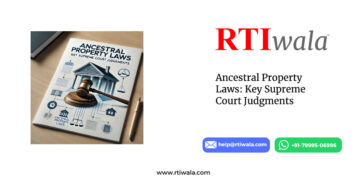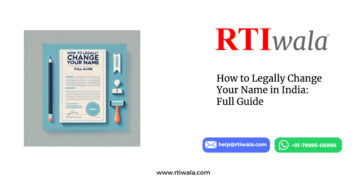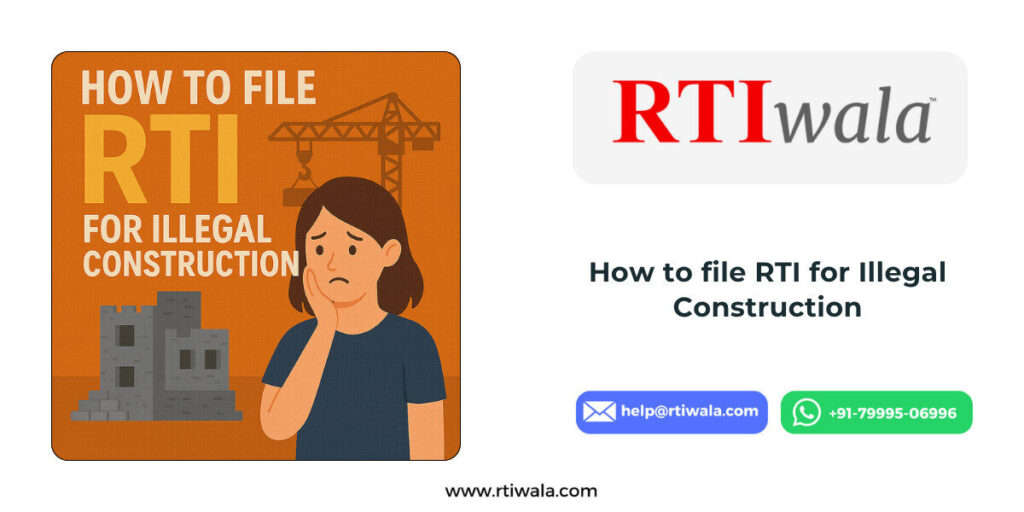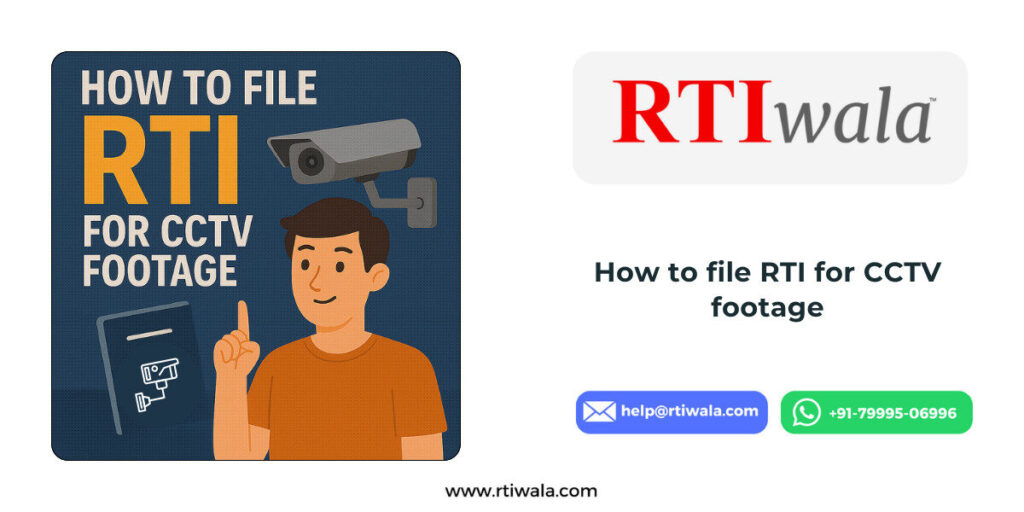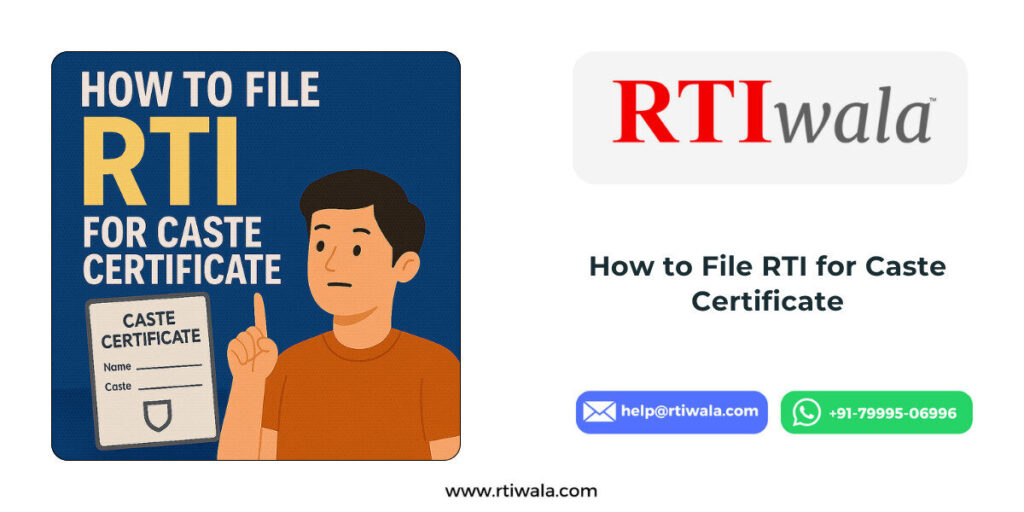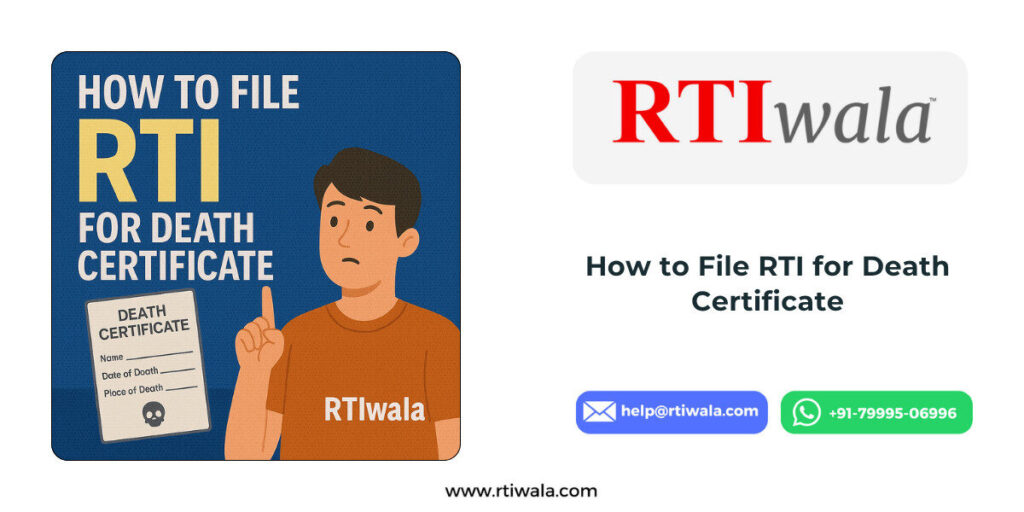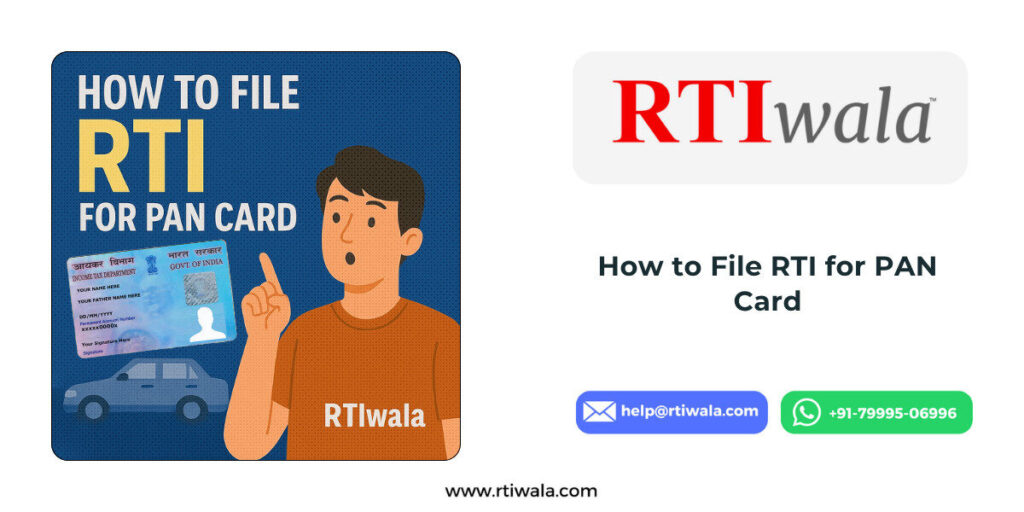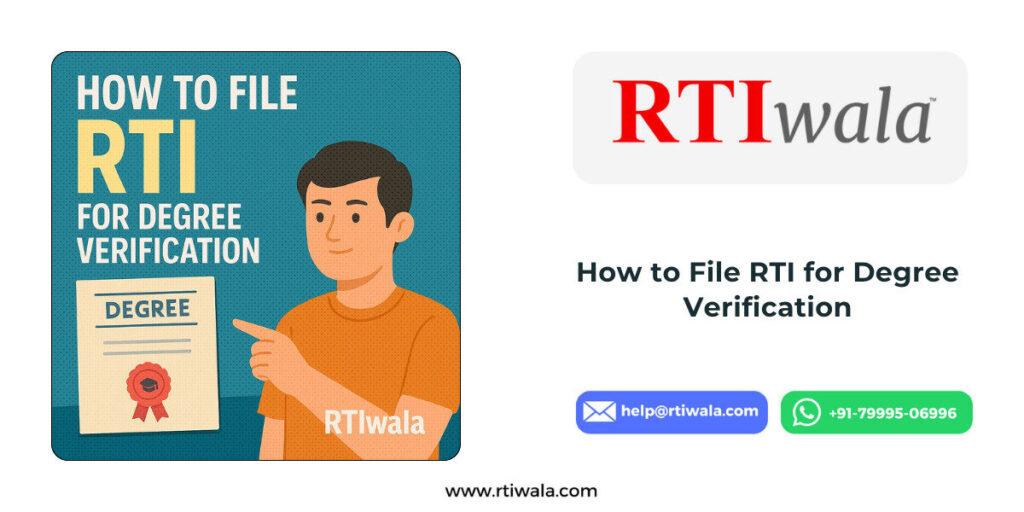Table of Contents
- What Is an Illegal Construction and Why It’s a Serious Offense in India (2025 Update)
- How to File RTI for Illegal Construction – Step-by-Step Process Explained
- Documents Required and Key Details to Include in Your RTI Application
- Common Mistakes to Avoid When Filing RTI Against Illegal Building or Encroachment
- How RTIwala Helps You Track and Expose Unauthorized Constructions (Expert Tips)
- What Happens After Filing an RTI? Timeline, Appeals, and Follow-Up Process
What Is an Illegal Construction and Why It’s a Serious Offense in India (2025 Update)
Illegal construction refers to any building or modification made without proper permissions, approved plans, or compliance with local municipal laws.
It often includes encroachments on government land, violations of Floor Space Index (FSI), or construction beyond sanctioned limits.
Why it’s serious:
Illegal constructions can endanger lives, block roads, violate safety norms, and cause severe property disputes.
Municipal Corporations like MCD, BMC, and GHMC routinely demolish such structures, but many survive due to lack of public awareness and weak oversight.
Tip: Citizens can file an RTI to expose such unauthorized constructions and demand accountability from civic authorities.
How to File RTI for Illegal Construction – Step-by-Step Process Explained
Here’s how you can file an RTI to know the status or action taken against an illegal building:
Identify the Public Authority
- For city areas → Municipal Corporation (e.g., MCD, BMC, BBMP, GHMC).
- For rural areas → Gram Panchayat or Town Planning Department.
Draft the RTI Application
- Use clear language and reference Section 2(f) of the RTI Act, 2005.
- Example: “Please provide copies of permissions, plans, and inspection reports for property no. __ located at __.”
Pay the RTI Fee (₹10)
- Online via RTI Online Portal for central or major state departments.
- Offline via Indian Postal Order (IPO) or cash.
Submit and Track Response
- You’ll receive a reply within 30 days. If not, file a First Appeal.
Pro Tip: If you fear local pressure or retaliation, file using Anonymous RTI through RTIwala safely and confidentially.
Documents Required and Key Details to Include in Your RTI Application
Before filing, ensure you include these essentials for faster processing:
Documents Required:
- Property address with ward/block details
- Photographs or location map (optional but useful)
- Applicant ID proof (if filing directly)
- Construction permission number (if known)
Key Details to Mention:
- Date of construction or modification
- Specific violations observed (e.g., illegal floor, road encroachment)
- Name of the builder or property owner
- Concerned department’s name (Town Planning, Building Permission, etc.)
Mention your purpose clearly — “To know whether the construction is authorized and what action has been taken.”
Common Mistakes to Avoid When Filing RTI Against Illegal Building or Encroachment
Avoid these common errors that delay or weaken your RTI:
- Vague questions like “Why haven’t you demolished the building?” (Use data-based queries instead.)
- Not specifying the exact location or property ID.
- Sending the RTI to the wrong department.
- Forgetting to attach the application fee.
- Ignoring follow-up through First Appeal if no reply within 30 days.
RTIwala Insight: Many applicants miss critical details — RTIwala’s Custom Drafting Service ensures accuracy and higher response success.
How RTIwala Helps You Track and Expose Unauthorized Constructions (Expert Tips)
RTIwala simplifies the entire process:
- Expert Consultation: Get help choosing the correct public authority.
- Anonymous RTI: Protect your identity when reporting influential builders.
- Online RTI Filing: File directly via RTIwala.com.
- Follow-Up Add-ons: For appeals and re-verification of civic responses.
Expert Tip: Combine your RTI with information from State Building Bye-laws, Town Planning Acts, and Municipal Rules for stronger evidence.
What Happens After Filing an RTI? Timeline, Appeals, and Follow-Up Process
Once filed, your RTI passes through the following stages:
Acknowledgment: Within 2–3 working days.
Processing: Concerned officer retrieves records and drafts a reply.
Response Timeline: Within 30 days (as per Section 7 of RTI Act).
No Response / Unsatisfactory Reply:
- File a First Appeal within 30 days to the Appellate Authority.
- Still no action? File a Second Appeal to the State/Central Information Commission.
Need help with your appeal?
RTIwala’s First Appeal experts can assist in escalation and re-filing.
Conclusion
Illegal construction affects everyone — from blocking public roads to risking safety. Using RTI, any citizen can question authorities and demand corrective action.
If you want professional assistance or wish to stay anonymous while exposing violations —
Call: +91-7999-50-6996
Visit: RTIwala.com to File Online RTI or Seek Expert Help Today!
FAQ
Q1. How to file an RTI for illegal construction in India?
To file an RTI for illegal construction, identify the local public authority (e.g., Municipal Corporation or Town Planning Department), draft a query under Section 2(f) of the RTI Act, and submit it online via RTI Online Portal or through RTIwala. You’ll receive a reply within 30 days about the building’s approval status and actions taken.
Q2. Can I file an RTI anonymously against illegal building or encroachment?
Yes, you can file anonymously using Anonymous RTI through RTIwala. It ensures your identity is completely protected while exposing unauthorized constructions. This is ideal if you fear local retaliation or pressure from builders or officials.
Q3. What happens if authorities ignore RTI about illegal construction?
If no reply is received within 30 days, file a First Appeal to the Appellate Authority under Section 19(1) of the RTI Act. Still no response? Proceed with a Second Appeal to the Information Commission. RTIwala also offers Follow-Up Add-ons to track and escalate such cases effectively.
Q4. Why should citizens file RTI against illegal constructions?
Filing RTI empowers citizens to expose violations, ensure accountability, and prevent civic negligence. It helps uncover approvals, inspection reports, and demolition actions — ensuring transparency in urban planning. Many public safety issues, like blocked roads and weak structures, can be traced to unchecked illegal construction.
Q5. Where can I find official rules about construction permissions and violations?
You can refer to the State Building Bye-laws, Municipal Acts, or official websites of local development authorities such as DDA, BMC, or GHMC. These documents specify floor area ratios, approval processes, and penalties for violations. RTI helps you verify whether these norms were followed for any construction.
Q6. Is it possible to get copies of building approval or demolition notices through RTI?
Yes. Under Section 2(j)(ii) of the RTI Act, citizens can obtain certified copies of building approval plans, inspection reports, and demolition orders. These records confirm whether the construction was authorized or not. You can request them directly via RTI or through RTIwala’s Custom Drafting service for precision.
Q7. How can RTIwala help me file an RTI for illegal construction safely?
RTIwala provides end-to-end RTI filing support — from identifying the correct department and drafting professional applications to ensuring confidential submission. You can choose Anonymous RTI, First Appeal, or Follow-Up Add-ons for complete assistance.
Call: +91-7999-50-6996 or 🔗 Visit RTIwala.com to File Online RTI today.










